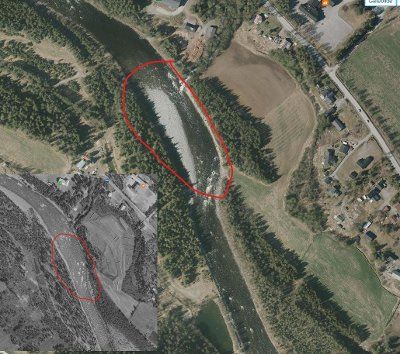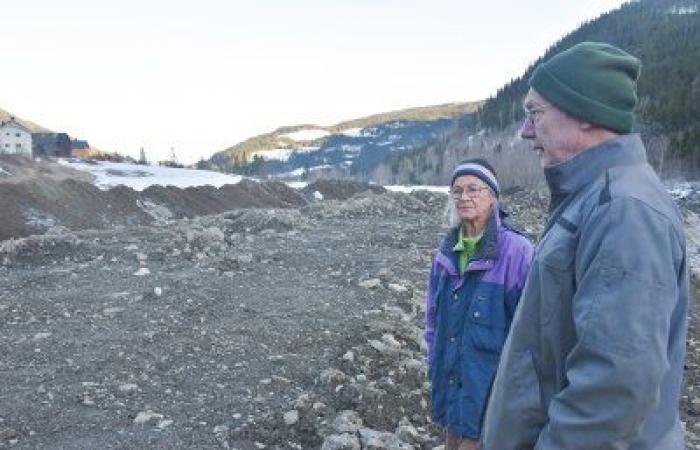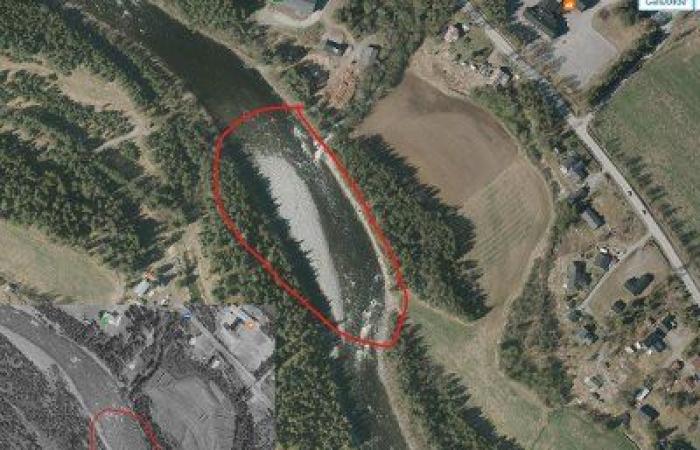Comment This is a comment, written by an editorial staff member. The commentary expresses the writer’s views.
We are preparing on everything getting wetter and wilder. We plan for more security in the face of stronger natural forces. Or, we do the best we can, while we wait for the State.
At Jørstadmoen is landowner Oddgeir Jørstad is unsure whether he will take the risk of repairing damage for close to one million kroner before Lågen is better secured against another flood. The topsoil lies fallow after the destruction during the extreme weather Hans. The damage is estimated at NOK 700,000-800,000. The farmer’s dilemma is whether he should spend 100,000 to 150,000, when the next flood can already come with the next torrential rain. In addition, put the dilemma into the government’s model for calculating the farmer’s income. If the farmer uses savings to repair the production land, he does not get a return on the money. The money might as well lie in the mattress.
also read
Have to cover millions of bills after the flood: – Takes our night’s sleep
Lillehammer Sp points out that this case is descriptive of large parts of Gudbrandsdalen. That is correct. It is illustrative of how the ravages of water can affect food production wherever it is operated close to watercourses, locally, regionally and nationally.
Topsoil that is still damaged of extreme weather can remain for a long time. At Easter time, GD wrote that the state had not processed more than 350 out of a total of 1,991 compensation applications. Farmers and local communities are not equipped for such extreme weather. So it is not the State either.
In Gausdal A farming couple in Olstad had most of the dirt road destroyed when Hans and the river Jøra raged in August last year. More than a million kroner they have to fork out after the restoration of cultivated land. Both the municipality and the landowner assumed that the Natural Damage Fund would cover the damage the river had done to the dirt road. They were wrong. The cost exceeds the value in use. And what exceeds its use value is not the government’s table. It sounds right, in a society that has models for calculating profitability and lack of profitability in one and all.

also read
Have to cover millions of bills after the flood: – Takes our night’s sleep
But part of the thing is also that the State has several heads. The Natural Damage Fund is one, NVE is another. Over the years, the gausdøls, who now have no idea how to get out of a hopeless situation, have seen the river become shallower. The fear of damaging floods has risen in line with the river bed. In an attempt to be a precaution, they already asked NVE in 2013 to take out mass in the river bed. The answer has been no. Until now. Until it was too late. Until the damage had occurred. It is literally standing with your head in a sandy river bed.
Look at Heidal. The river Sjoa digs and digs, and threatens large areas of cultivated land. The river changes with new floods, and the landowners want to make the river course as it was before the first of the biggest floods of our time, in 1995.
Norway’s Water Resources and Energy Directorate washes its hands, and believes that this type of measure is not their responsibility. The county municipality and State Administrator believe that a separate regulatory plan is needed before anything can be done. That’s where the case is. No one is surprised that it is there until it is too late.

also read
Will remove 10,000 cubic meters of gravel from the river: – This is becoming critical
We’ll probably have to endure that new floods wreak new havoc, also on agricultural land. In some contexts, it is actually absolutely necessary to release water from flood-sized rivers over cultivated land, in order to protect other purposes downstream of the watercourse.
The public handling of both prevention and restoration must nevertheless become both more predictable and rational. It can hardly be called either simple or rational to face a wetter and wilder climate with government intervention. There can be no doubt that it is the politicians’ task to ensure that the community’s many managers do not get lost in conservation provisions and regulations that make life impossible to live along the waterways.







